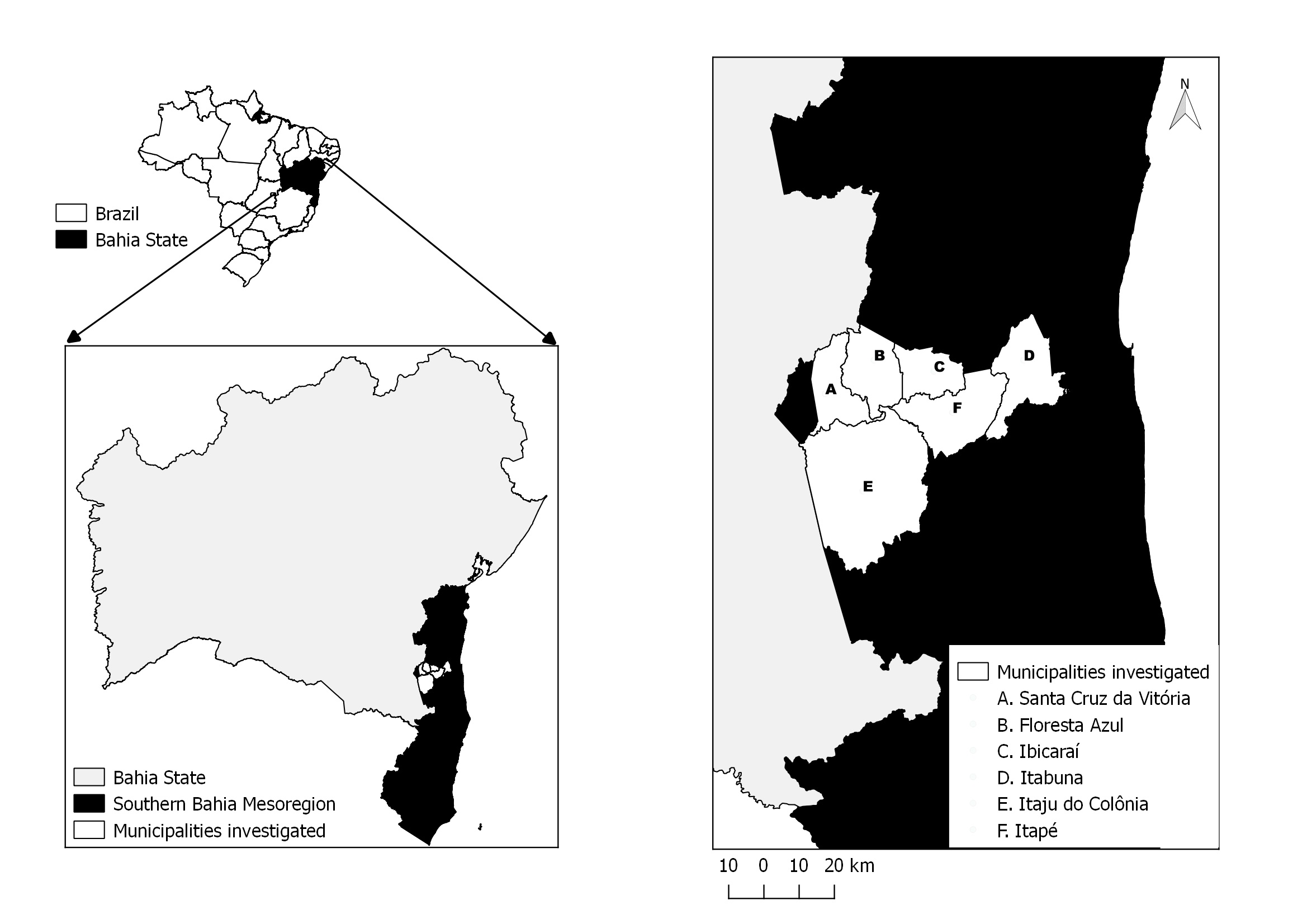Abstract
The aim of this study was to determine the frequency and factors associated to Babesia caballi, Theileria equi and Trypanosoma evansi in naturally infected equids from the northeast Brazil. Blood samples from 569 equids (528 horses, 8 mules, and 33 donkeys) were collected and tested for the presence of DNA of each of these protozoan parasites by PCR. Generalized linear models were used to evaluate risk factors associated with the infection. The frequency of T. equi infection was 83.5% (475/569) - 84.3% in horses, and 73.2% in donkeys and mules. The results of the final model indicated that age (senior group) and animal species (mule and donkey group) were protective factors against this pathogen. The frequency of B. caballi infection was 24.3% (138/569) - 23.5% in horses and 34.1% in donkeys and mules. Age (adult and senior group) was considered a protective factor against B. caballi infection whereas animal species (donkey and mule group) were considered a risk factor for the infection. Trypanosoma evansi infection was not detected in any of animals. Our results suggest that equids from the area studied may be infected earlier in life with the etiological agents of equine piroplasmosis and become asymptomatic carriers.
Keywords:
Piroplasmosis; trypanosomiasis; epidemiology; horses; mules; donkeys

 Thumbnail
Thumbnail
